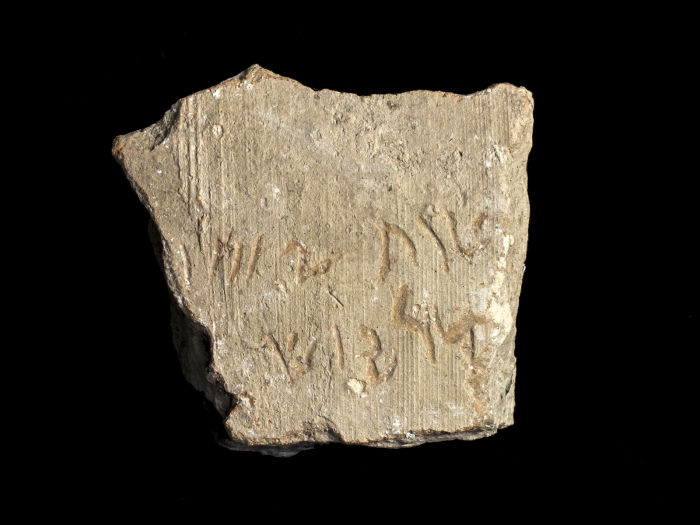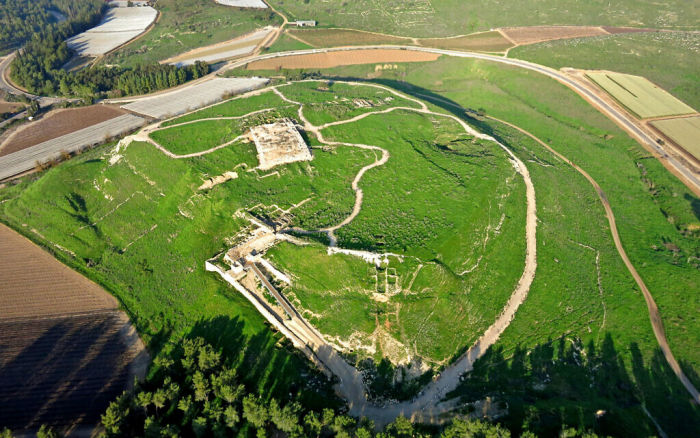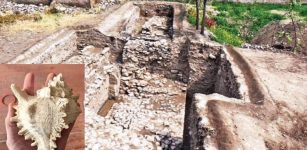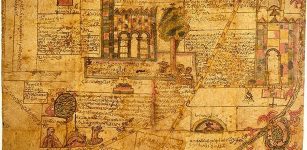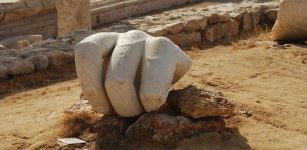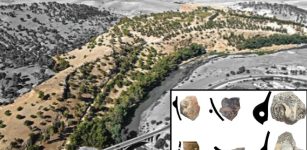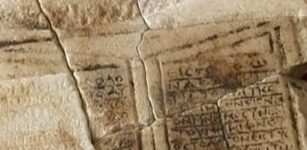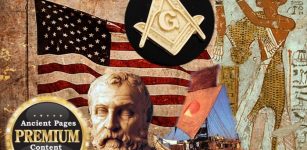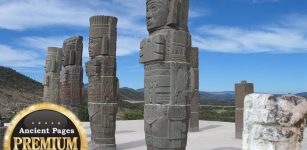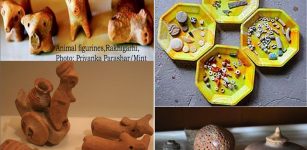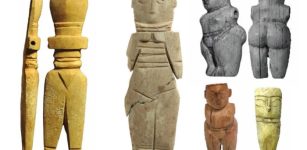Rare Discovery Of A 2,500-Year-Old Ancient Receipt With The Name Of King Darius The Great
Conny Waters - AncientPages.com - While visiting the Tel Lachish National Park in south-central Israel, a hiker and his friend found a 2,500-year-old pottery shard, known as an ostracon inscribed with some letters.
The potsherd discovered in Tel Lachish with an Aramaic inscription “Year 24 of Darius” is the first written evidence of Persian king Darius the Great discovered in Israel. Credit: Israel Antiquities Authority
When they reported it to the Israel Antiquities Authority, the ostracon was examined in the advanced Analytical Laboratory and studied by Saar Ganor of the Israel Antiquities Authority and Dr. Haggai Misgav of the Hebrew University of Jerusalem. To their astonishment, it turned out to be a rare find furnishing evidence for the Persian royal administration at Lachish in the Achaemenid period at the turn of the fifth century B.C.
An Inscription From The Reign Of King Darius The Great
The name of the Persian king Darius the Great, the father of king Ahasuerus was inscribed on the ostracon
According to the Israel Antiquities Authority, it is the first discovery of an inscription bearing the name of Darius I anywhere in Israel.
The Aramaic inscription on the fired potsherd reads “Year 24 of Darius,” dating it to 498 B.C. The short text thus records the name of the Persian king Darius the Great (Darius I), the father of Ahasuerus—also known as the Biblical Achashverosh from the Book of Esther, which is read annually on the Jewish festival of Purim.
This is the first discovery of an inscription bearing Darius the Great's name anywhere in the Land of Israel. During his long reign (522–486 BCE), the Persian Achaemenid Empire expanded, reaching its greatest extent under his son Hishrash (Ahasuerus, Xerxes in Greek), who ruled most of the ancient world.
Credit: Israel Antiquities Authority
“When I picked up the ostracon and saw the inscription, my hands shook," said Eylon Levy, who discovered the rare potsherd at Tel Lachish. “I looked left and right for the cameras, because I was sure someone was playing an elaborate prank on me.”
According to the researchers Saar Ganor of the Israel Antiquities Authority and Dr. Haggai Misgav of the Hebrew University of Jerusalem, “The British Archaeological Expedition that carried out excavations at Tel Lachish in the 1930s uncovered an elaborate administrative building from the Persian period, built on top of the podium of the destroyed palace-fort of the Judean kings. The Persian-era residence extended over a large area and comprised elaborate halls and courtyards with a majestic columned portico entrance in Persian style. Today, only the pillar bases remain in place on the mound as the British expedition dismantled the remains of the elaborate Persian building in order to excavate the underlying Judean palace.”
An aerial view of the Tel Lachish archaeological site and the Persian administrative palace. Credit: Israel Antiquities Authority
It appears that the inscribed ostracon, discovered in the area of the Persian building, may have been an administrative note akin to a receipt for goods or for their dispatchment.
The 24th year of Darius I is dated to 498/7 BCE. The area of Lachish in the province of Edom/Idumea within the “Beyond the River” satrapy, paid taxes, some in the form of agricultural produce, to the Persian administrative system. Lachish, a major fortified city with a temple in the province of Idumea, was responsible for collecting taxes for the Persian king’s treasuries.
The taxes were collected and dispatched in the central administrative building, and the inscribed sherd may have been a dispatchment note written by a storeroom official. This short note may be one of the earliest administrative inscriptions from the Persian period found in the country.
See also: More Archaeology News
“It’s amazing that visitors to the site come across such a rare inscription 'reviving' the Persian King Darius known to us from the sources!” says Eli Escuzido, Director of the Israel Antiquities Authority.
“His son King Ahasuerus, who ruled 'from India to Kush,' could never have imagined that we would find evidence of his father in Israel 2,500 years after the dramatic events in his royal court!”
An article about the inscribed potsherd will be published in the Israel Antiquities Authority journal ‘Atiqot, vol. 110: The Ancient Written Wor(l)d.
Written by Conny Waters - AncientPages.com Staff Writer


